A Beginner’s Guide to Brian De Palma
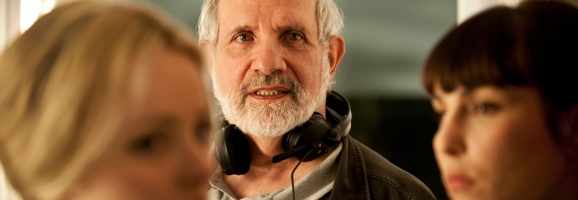
With an impressively daunting body of work consisting of almost 30 films dating as far back as the 1960’s, Brian De Palma is a director than can be a bit difficult to dive into. De Palma’s new film Passion hits theaters on August 30th and is already available on VOD platforms, and it really is a return to form for the director who has stumbled with his last few outings. In Passion, De Palma not only has a chance to deploy many of his favorite visual signatures, but it also provides him with the opportunity to return to some of the subject matter he frequently enjoys exploring. Because of this, it’s worth looking back at De Palma’s most important films to identify how he’s used these themes and tricks throughout his lengthy career. If you’re a novice when it comes to Brian De Palma’s work, these six films are the perfect place to start.
6. Phantom of the Paradise (1974)
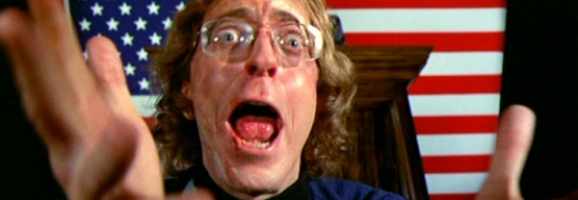
A joyously weird musical-horror hybrid, Phantom of the Paradise finds De Palma at his most wacky and experimental. With a mash-up plot drawing from The Phantom of the Opera, Faust, and Dorian Grey, this movie follows a scarred and deformed masked man who haunts the Paradise Theater to get revenge on the musician who stole his work. As if the popping music and tragic characters weren’t enough, De Palma loads the film with startling amounts of violence and cultural satire. This movie shows off how gleefully excessive De Palma can be. Look at one key scene halfway through the movie: De Palma uses one of his favorite techniques, splitting the screen down the middle to show us two images at once. On one side, we follow a car with a ticking bomb in it being pushed onto the stage during a performance. On the other side, we see a band called the Juicy Fruits rocking out to the applause of the crowd. Partly a Touch of Evil homage and partly a mockery of The Beach Boys, this scene sums up everything there is to love about Brian De Palma. Who else could give us film references, mounting tension and violence, and ironic musical numbers not only in the same scene – but in the same frame?
5. Mission: Impossible (1996)
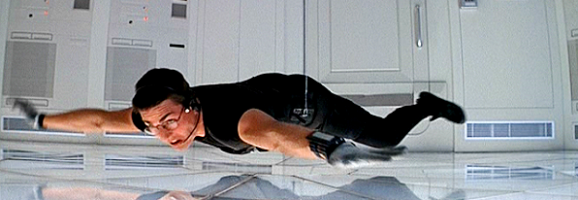
One of De Palma’s biggest strengths as a director is his ability to stage and orchestrate visually spectacular and intense set pieces. De Palma’s skill at slowly building the suspense comes as no surprise since he’s a student of Hitchcock, and frequently uses Hitchock’s work as his own film grammar. Yet it’s the way De Palma constructs these sequences that gives him his own voice: the way he allows the camera to explore the geography of his locations, letting the viewer subconsciously soak it all in so that when the action starts, we never get lost. It’s this quality that puts him so far ahead of many disorienting action directors today.
Which brings us to Mission: Impossible. At first glance, De Palma might appear to simply be a hired gun for a studio attempting to start a franchise and Tom Cruise-vehicle off of the popular TV series. But De Palma brings all his skills to the picture, and uses the large budget at his disposal to craft some of the best set pieces of his career. In the first of two bravura sequences, Ethan Hunt and his team break into the CIA headquarters in Langley. As Ethan hangs perilously from the vault’s ceiling, unable to make a sound or touch a thing, everything that could possibly go wrong does. Equipment is dropped, mice show up in the vents, sweat drips down yet is miraculously caught at the last second before touching the sensors on the floor. It’s incredibly suspenseful stuff, yet De Palma manages to top it with the awesome final high speed chase between a helicopter and a train. De Palma may be delivering a studio product here, but he still shines and takes full advantage of the tools at his disposal.
4. Carrie (1976)
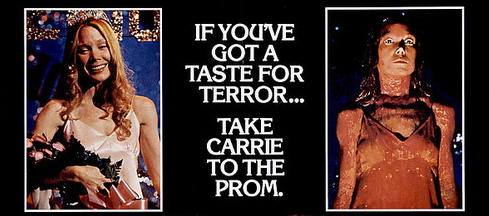
The best adaptation of a Stephen King novel after The Shining, Brian De Palma takes the complex issues of the source material – school bullying, female sexual awakening, religious fundamentalism – and perfectly translates them to the big screen while still putting his personal stamp on the material. In the famous prom sequence where Carrie’s psychic powers are finally unleashed in full force, De Palma uses his split screen technique to its most thematically appropriate effect. We get to see the duel sides of Carrie’s psyche, the power behind her eyes and the destruction she’s causing simultaneously. It’s a terrifying sequence, yet the build up to it is borderline tortuous in the amount of time De Palma manages to drag out the anticipation. Carrie still borrows heavily from the Hitchcock playbook, but it expands on it enough that it never feels cheap, and De Palma’s stylistic choices here became a foundation which he would return to in one of Passion’s most powerful scenes.
3. Body Double (1984)

Though De Palma’s appropriation of Hitchcock is common throughout his entire career, there are three films in particular that borrow the basic narrative wholesale: Dressed to Kill from Psycho, Sisters from Rear Window, and Body Double from Vertigo. Any one of these would be essential viewings when studying De Palma’s filmography, but I think Body Double does the most to separate itself from its Hitchcockian origins, and also works as a 1980’s time capsule and Hollywood satire. Body Double contains many of the elements that will pop up again in Passion, such as voyeurism and De Palma playfully tricking the viewer with what they are seeing. There are several movies within the movie, which will often be cut to without any warning. This constant questioning of what is real and what isn’t fits in very well with the Hollywood skewering De Palma is going for here.
Again, the plot is really just Vertigo set in Hollywood (and with a more dweeby hero than Jimmy Stewart), but it gets cranked up to absurdly lurid levels. De Palma takes the iconic moment where Hitchcock spins the camera around Scotty as he kisses Madeline, and places it in a porn/music video hybrid where the couple is now having sex. This memorable set piece of Body Double features the hero searching through the porno underworld in an attempt to recreate a former lover. This erotic movie-within-the-movie sequence doubles as the real life music video for Frankie Goes to Hollywood’s hit song “Relax.” De Palma is blurring the lines between the world of the fake porn movie, the world of Body Double, and the world of MTV music videos.
http://www.youtube.com/watch?v=NgyAgsDo4sw
2. Carlito’s Way (1993)
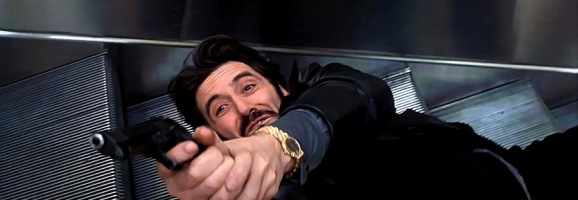
Brian De Palma has returned to the gangster genre several times. Scarface is probably the most famous of these, and De Palma handles the excessive lifestyle of drugs and violence well, but it’s really equal parts him and Oliver Stone’s screenplay. The Untouchables is great, and delivers another classic De Palma set piece with the Odessa Steps homaging gunfight on the stairs, but I still think that it’s Carlito’s Way which stands as the best of the three. Featuring an almost unrecognizable Sean Penn in one of his best performances, as well as the always dependable Al Pacino, Carlito’s Way is an emotionally powerful and tragic story of a gangster who just couldn’t get away from the life he so desperately wanted to leave behind. Every action set piece here works not just because of the well-choreographed gunplay, but because of the brilliantly constructed tension building up to them. For example, before a shootout on an escalator, De Palma tracks Carlito in one long camera shot as he darts around corners, hiding from his pursuers. De Palma leaves the trickery and tongue-in-cheek approach entirely behind for this one, and plays the character drama and the romance completely straight – and he nails it.
1. Blow Out (1981)
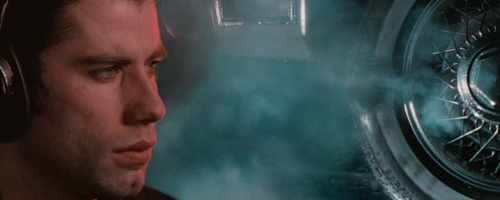
Brian De Palma’s best film brings all his auteur strokes together in a thrilling and stylized masterpiece. Once again using earlier cinema as a spring board, De Palma takes the set up of Antonioni’s Blow Up – a photographer accidentally photographs a murder – and places it in the world of sound. John Travolta plays Jack, a sound designer on horror B-movies. One day when out recording sound effects for his new picture, he inadvertently captures what he believes to be an assassination. Jack then finds himself deep into a political conspiracy larger than he could have imagined. Blow Out features many of De Palma’s great visual flourishes: split screens, first person sequences, spinning camera movement, and bright popping colors. All these touches add to the compelling political intrigue and tragic character study at the center of this perfectly executed movie. Fortunately, it can all be enjoyed right here:
http://www.youtube.com/watch?v=3NCfeMAZ4xA
Brian De Palma is a director who you learn to love the more movies of his you see. He has a style that doesn’t appeal to everyone, and sometimes he can get too carried away with trying to build off of his favorite filmmakers that he fails at delivering a good story (just look at Mission to Mars, and how it falls well short of it’s Kubrickian ambitions). Yet he’s still an immensely effective visual storyteller, and can hold his own across a variety of genres. Passion is a great entry into the De Palma cannon, and definitely worth checking out either on Video On Demand now, or when it hits theaters in a few weeks.
What do you think? Leave a comment.











Oh I haven’t watched Blow Out, one of the kinds of movies has been on my watch list for years… that turned into decades.
Here’s my top 6:
1. Scarface
2. The Untouchables
3. Carlito’s Way
4. Casualties of War
5. Phantom of the Paradise
6. Mission: Impossible
I find Brian de Palma very fascinating as a director because his filmography is, quite frankly, all over the place. (hahaha)
Underrated. I think his films, varying though the content and quality may be, have a few De Palma staples: the muted colors, the whimsicality (though a very different type of whimsicality than Speilberg’s), and an underlining macabre, as if each film is set in a very strange dreamworld. It all comes down to personal tastes. Some may look for a more conventional style, while others might prefer something extremely macabre, such as Tim Burton in his prime. While I think it’s a shame that he’s underrated, it’s not entirely surprising.
Dressed to Kill and Carrie are his masterpieces. They have only improved with age.
But Black Dahlia is not only DePalma’s worst, it may be the worst major studio film of that entire decade, and easily on my top ten for all time worst movies ever. It is a joyless, ugly, incomprehensible waste of money. Also strangely amateurish…like something from a first-time director.
Man, when he’s good, there is no one better. But when he fails he fails BIG.
Black Dahlia was definitely a misfire. I think the set piece on the spiral staircase was awesome, but the rest was pretty unpleasant, I agree. Bonfire of the Vanities is another big miss by him with nothing really redeeming about it.
You’ve picked an odd arrangement of De Palma films, I enjoyed your descriptions but I wonder why you don’t have Dressed to Kill here? Are these in any particular order?
Well since it’s an “essentials” list instead of “best of”, the order is more which movies I think best display De Palma’s style, and what he’s all about as a director. Dressed to Kill rocks, but I though including that and Body Double would be redundant. Scarface is one of my favorites, but it feels less like a De Palma movie than a lot of his others actually. So if it was a straight ranking, the choices and order would be a bit different (but the top 2 would stay the same).
I am a woman who loves DePalma films, but I also love to hate them because it’s fairly obvious to me that misogynist fantasy is his trademark. For those who know his films well, do you agree?
It didn’t even occur to me until I watched Body Double (love it) in a film class and then read several articles condemning him.
Then again, part of me wonders if he’s just trying to say more about the MEN in the films than the women. For instance, there are several plot lines involving heroes who fail to save the heroines. But he sometimes presents it in a comical way and I really start to wonder…
Yeah, I’ve heard some discussion of misogynist undertones to his movies before. I saw him discuss it in an interview once (I think on dvd bonus features or something), and he claims he just enjoys filming women more. I think the whole “Hitchcock Blondes” also comes into it. But I think Body Double is De Palma playfully making fun of those who condemned his previous works as misogynist. I mean, the scene where the killer is pushing the drill down towards the woman between his legs is so blatantly sexual, I don’t think it should be taken too seriously. De Palma is making jokes, like he likes to do.
Femme Fatale has his best female protagonist I’d say (as you can guess by the title). I didn’t have a chance to discuss it in this article, but it’s definitely worth watching especially when working through the gender dynamics in De Palma’s movies.
I don’t think I’ve seen any De Palma films, but it’ll be really interesting to delve into a few with your analysis and Malisa’s above comments in mind.
You left out Scarface? Why? Because that is best work of Al Pacino since Godfather and you also get to see the versatility of Palma.
Mission Impossible seems to be a significant part of de Palma’s younger life, which is why he was able to do well with it.